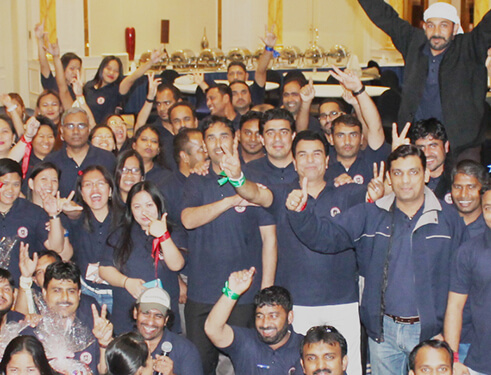Workshop and Training Sessions
Presentation Methods
Lecture
The School Bus Driver and Bus Attendant In-Service Series are intended to be interactive. While some of the material is presented in lecture form, it is expected that there will be considerable participant involvement in each module.
Guided Discussion
The participants are divided in small group of teams, suggested questions are offered to the participants and they are encouraged to discuss between the teams and answer. Instructors can use these questions as a starting place for a guided discussion. The participants have substantial expertise and prior experience. Not only will they be eager to share their knowledge with others, but we can take advantage of this wisdom to enhance the session.
Practice Sessions
Explicit directions are given for conducting the practice sessions. We should prepare for each practice session fully before presenting it. There are several techniques that will help us to conduct an effective session.
- Before the presentation, we need to think through the practice session carefully. Visualize the purpose the session serves and how it will progress.
- Give clear instructions as to what we expect the participants to do.
- Monitor the participants closely as they work and help them when they have difficulty. Be available to answer questions.
Flipcharts
Suggestions are made for when to record group answers on the flipchart (or a blackboard or whiteboard). In the Instructor Notes column on the left page of the curriculum are notations indicating when we will want to write on the flipchart.
Here are some tips for using flipcharts effectively.
- As we write on a flipchart, talk to the class, not to the chart. Be aware where the easel is placed and how the instructor stands. The entire group must be able to see the flipchart.
- Write in a large font for people at the back to see.
- Don’t write in all caps. A reader reads all caps word for word. Using upper and lower case increases comprehension.
- Use bright colors that are easier to see. Avoid using all black or soft colors.
- Ask for volunteers to write on the flipchart to increase student participation.
- Use lined or grid paper. It helps to keep your writing straight.
- Use watercolor pens, not permanent ones. They won’t go through the paper to the next sheet or decorate your clothes.
- Use two flipcharts side-by-side if you want to keep some information visible while you develop additional facts or tape sheets to the walls for future reference.
Overhead Projectors
Overhead projectors are a great teaching aid. Participants can see the words as they hear them. This increases comprehension and retention. Almost every module has overhead slides.
Here are some tips for using overhead slides:
- Use projectors for Power Point presentations and videos.
- Turn the overhead projector off when not needed.
- Where possible use interactive-boards
- Lay a pen or pointer on the overhead slide to show which item you are discussing.
Communication Skills
Here are the few points which can make the presentation interesting:
- Be Conversational: Always speak in simple, clear language appropriate to the participants. Be sure to use correct pronunciation and to enunciate clearly. Use a friendly tone of voice. Smile. Relax.
- Face the Participants: Remember that you are talking to a group, not to a training aid. Practice writing on a flipchart and using overhead slides so that you can do so while still facing the group. Remember to maintain eye contact with the group.
- Establish a comfort level: Get to know your audience, even before the session starts. “Break the ice” at the beginning of the session. Express interest in participants’ experiences and contributions. Connect to your audience by being authentic and accepting.
- Use humor appropriately: If the topic is serious, be very cautious in using humor. Use humor only if it is relevant and comfortable for you. It should be directed at yourself and not at others. Inappropriate humor can easily offend and you will have lost those offended for the rest of the session.
- Guard against annoying mannerisms: Repeated motions (tapping a pencil, twirling hair, stroking a beard, jingling coins, playing with jewelry, rocking back and forth) can be distracting. Participants will focus on them rather than on what you are saying.
- Vary facial expressions, tone, speed of delivery and volume.
- Move Around: Change your position in front of the group but avoid pacing. Moving around forces participants to follow you and avoids them from getting bored. Don’t stand behind a podium or table.
How do we ask good questions?
- Questions serve to involve students in the session by drawing on their knowledge and expertise.
- Be conversational.
- Questions should be relevant and intended to expand upon course material.
- Ask questions in a friendly manner.
- Do not ask questions that can be answered with “yes” or “no.”
- Ask open-ended questions that start with “how,” or “why,” or “what if.”
- Vary the types of questions you ask.
- Repeat and acknowledge answers. Comment and expand upon them.
How to handle questions asked?
- If you don’t understand the question, ask the person to repeat it or rephrase it.
- Be sure the group can hear a question asked of you. If not, repeat it for the whole group
- It is okay to say you don’t know the answer to a question.
- Ask if anyone else in the group knows the answer. If not, make a note of the question and tell the asker you will find out the answer and get back to him or her
- Sometimes you will be asked a diversionary or inflammatory question. There is no formula for handling this situation. Acknowledge the asker and get back on track as quickly as you can
Feedback: How to provide feedback? How to look for feedback?
- Encourage participation by taking responses from everyone and by acknowledging every statement made.
- Reinforce positive contributions but respond to everyone, even if you think the comment is “off the wall.”
- If you need more information than the comment contains, ask for more.
- If you cannot agree with the content of the comment, focus on the feeling of being expressed and say something understanding or reassuring. I can see that you feel strongly about that.
- The point is to keep the group participating.
- Watch for signs of misunderstanding, confusion, or boredom. Actively seek feedback, acknowledge it, and modify your presentation accordingly.
How to handle a problem participant?
- Expect that some members of the group may not cooperate or may not participate.
- Be prepared to handle people who fit one of these categories (“know-it-all,” too talkative or silent, complainer, wanders off the subject).
- Respond to these participants by being respectful, assertive, and directive.
- If the problem persists, speak to the person outside of the session.
- Remember that you are in charge but don’t insult the individual.
- Don’t correct him/her in front of others.

